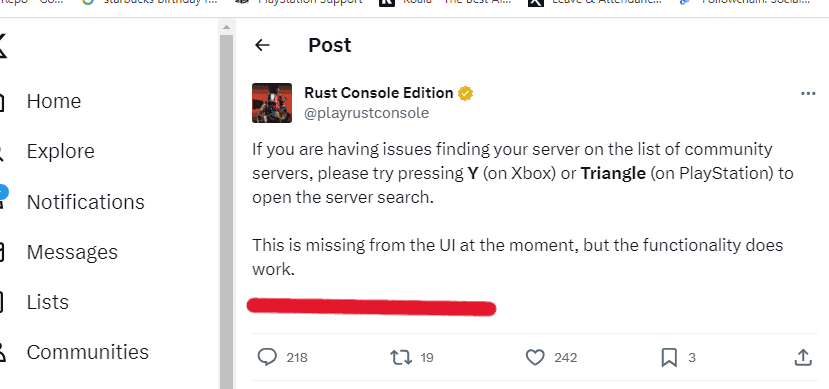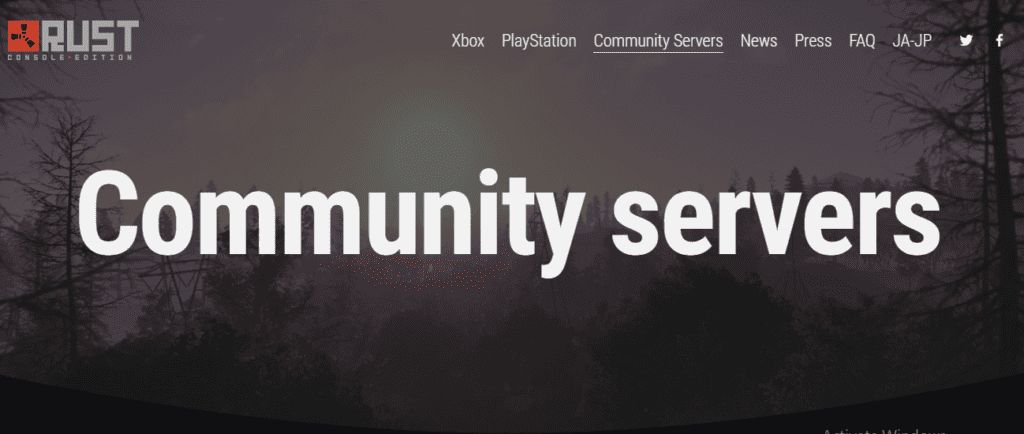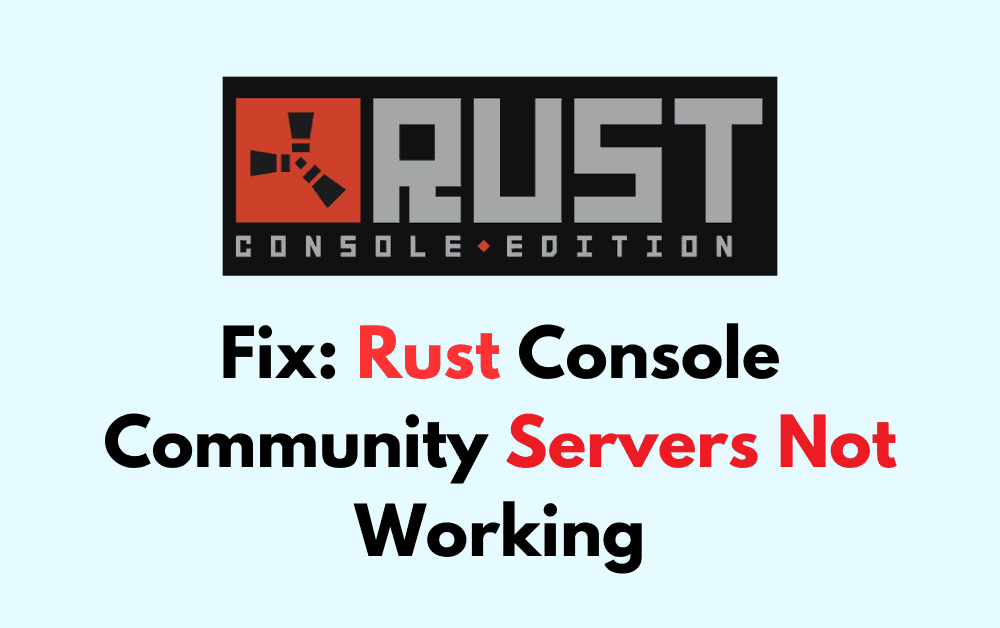If you’re a fan of the gritty survival game Rust on console, you might have encountered the frustrating issue of community servers not working as expected.
The good news is that there are steps you can take to troubleshoot and resolve these issues, ensuring you can get back to the immersive world of Rust with minimal downtime.
In this guide, we’ll walk you through some practical solutions to fix common problems with Rust console community servers, so you can continue to enjoy everything this challenging game has to offer.
How To Fix Rust Console Community Servers Not Working?
To fix “Console Community Servers Not Working” on the Rust console, you can check server status, verify game files, and adjust server filters. Additionally, you can also try to shorten the server name to resolve the issue.
1. Check The Server Status Of Rust
Before diving into more complex solutions, ensure that the servers are up and running. Sometimes the issue might be on the server’s end. You can check the official Rust Console Edition Twitter account for real-time updates regarding server status.

2. Restart Your Console
A simple but often effective fix is to restart your gaming console. This can clear temporary glitches affecting your ability to connect to community servers.
- Power off your console completely by holding down the power button until it turns off.
- Unplug the power cable and wait for about a minute.
- Plug the power cable back in and turn on your console to see if the issue has been resolved.
3. Check Your Network Connection
Ensure that your internet connection is stable. A poor or unstable connection could be the reason behind the difficulty in connecting to servers. Try resetting your router or connecting via an Ethernet cable for a more stable connection.
- Test your internet connection by using your console’s built-in network test feature.
- Restart your router by unplugging it, waiting a minute, and plugging it back in.
- If possible, connect your console directly to your router using an Ethernet cable for a more stable connection.
4. Verify Rust Game Files
Sometimes, corrupted or missing game files can cause issues with connecting to servers. If your console allows it, verify the integrity of the game files and redownload any necessary components.
- Ensure your game is up to date with the latest patch. You can usually check for updates in the game’s settings menu or on the console’s main dashboard.
- If you suspect corrupted data, you may need to uninstall and then reinstall the game. Be sure to back up your saved data if possible.
5. Adjust Server Filters
Incorrect filters can hide the servers you’re looking for.
- When searching for servers, access the server search filters in the game.
- Make sure you haven’t set any parameters that are too restrictive, such as searching for servers with no players or with a ping that’s too low.
- Adjust these filters to be more inclusive, which may help in finding the server you’re looking for.
6. Shorten Server Name
If you’re hosting a server and it’s not showing up, try shortening the server name.
- Access your server either through a remote desktop connection if it’s a dedicated server, or log in to your game server control panel provided by your hosting service.
- Navigate to the directory where the
server.cfgfile is located. For example, this is usually in the server’s installation directory/server/rust/cfg/for a Linux server. - Open the
server.cfgfile using a text editor. If you’re using a control panel, an editor might be provided within the web interface. If you’re accessing the server via SSH or remote desktop, you can use editors like Nano, Vim, or Notepad++. - Find the line that starts with
server.hostnameor a similar directive. This line defines the current name of your Rust server. - Modify the value after
server.hostnameto your new desired server name. Keep it short and without special characters. For example:server.hostname "New Server Name" - Make sure to enclose the new name in quotes.
- Save the
server.cfgfile after making your changes. In a text editor like Nano, you would pressCTRL + Oto write out the changes andCTRL + Xto exit. In Vim, it would be:wq. - To apply the changes, restart your Rust server. This can be done through the control panel with a restart button or via the command line with a command like
restartif you’re in the server console. - Once the server has restarted, open Rust and check the server list to ensure your server is listed with the new, shortened name.
7. Contact Support Of Rust

If none of the above solutions work, it may be time to reach out for help. You can find support and troubleshooting tips on the Rust Console Community Servers page, where you can also contact customer support for technical assistance.

